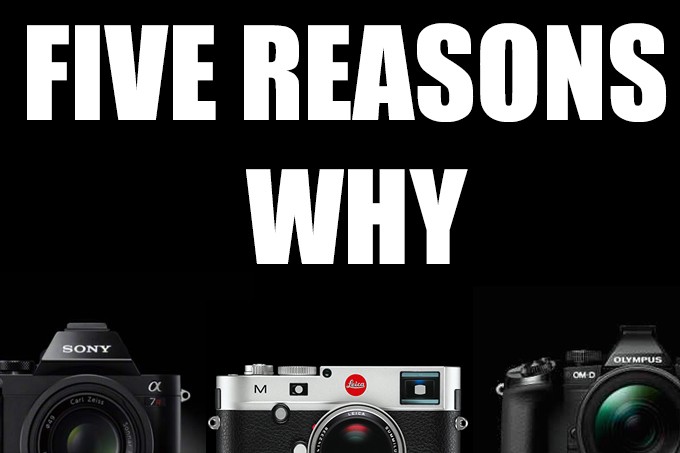
Five Reasons why I prefer Mirrorless to a DSLR, ANY DSLR…
By Steve Huff
You know, ever since the humble beginnings of this website I have been drawn to smaller, sexier and cameras that have fun factor and mojo to them. I started this site with a Leica M8 review due to my love for what was at the time, IMO, the sexiest digital camera available. It was so different from the standard DSLR’s that flooded the digital camera market for so long. It was small, but had a serious heft, feeling like it was made out of a block of stone. The viewfinder on a Leica M has always been a tried and true old school rangefinder, which offered a much more challenging experience, at first. Soon, it became my favorite way of “seeing” with a camera viewfinder.
The Leica M8 had a good run, but when the full frame M9 hit, all hell broke loose. At the time, the only full frame digital cameras were things like the Canon 5D and Nikon D700. The M9 hit and there it was, a full frame camera that was much smaller than any DSLR. The M lenses were and are tiny in comparison to DSLR lenses (due to being manual focus) and the M9 made an amazing small, but very well made (better made than any DSLR) full frame powerhouse, with image quality that could no be matched, at the time, by any camera. Even today no camera can recreate the look of the old M9, not even the M 240 which is Leica’s latest M camera.
But this article is not about Leica, I only mention the M8 and M9 as I feel, for me, these are the cameras that were very important at the time they were released, as there was simply no other full frame offerings that could come close to the build, size and performance (as long as we had decent light of course, those early Leica’s were not so hot in low light). The M9 was huge for Leica, they sold a ton of them and it was the M9 that had Leica selling out their entire stock of M glass for months at at time. Wait lists were long, and Leica was riding the new mirrorless wave. There was a reason for this, and it is called TIMING.
LEICA T AND NEW 35 SUMMILUX 1.4 T Click it for larger.
Soon after the M8 and M9, other companies started releasing convincing mirrorless cameras that lived up to the promise of smaller size, and more fun factor but many of them were flawed with lack of lenses, slow AF or quirky performance. Many looked gorgeous, like the Olympus EP1, but it was so dog slow, had no EVF 0r OVF and it had only a couple good lenses to choose from. Panasonic made waves with the GF1 and soon, many were on the mirrorless train, but it was a slow road. Over the years these companies were releasing body after body but the lenses were taking time. This caused the DSLR crowd to predict the demise of mirrorless … “What good is a small body if you do not have good lenses”..
Then Olympus and Panasonic started kicking ass by releasing amazing lenses that were small and performed incredibly well. Fast primes with attractive jewel like design and stunning performance. Lenses like the Olympus 75 1.8, 45 1.8 and the Panasonic 20 1.7 and the drool worthy Nocticron..today we have LOADS of lenses for the Micro 4/3 system, all we could ever want or need from ultra wide 7-14 or 8mm fisheye to 300mm fast pro primes and consumer zooms.
Fuji was going full steam ahead as well, let us not forget about them! Fuji created TONS of excitement for mirrorless with the original Fuji X100. Many were saying “Now I can have my affordable Leica M style camera”..some were calling it a rangefinder, of which is most certainly was and is not, but it gave us the same kind of feeling as using one. Image quality was up there with the M9 even though the X100 was an APS-C camera and not full frame. Low light slaughtered the M9 and many feel the X100 was the start of Leica’s sales decline. See, Leica attracted the MASSES with the M9, unlike what they have done before (and after). The masses came out for the worlds first full frame mirrorless camera, which was the M9, there was nOTHING like it. I was getting THOUSANDS of emails over 6 months about the Leica M9 from normal joe’s who heard about it and was intrigued, even at the high price tag. When the X100 came out, that halted Leica’s mystique a bit as many saw the X100 as being like an M. While it was not, in any way – not in build, feel, shooting experience, or output, an M, it resembled one with its shape, and put out fantastic performance, so that was plenty good enough for the masses, at 1/6th the price.
Sony 24-70 G Master and Sony A7RII. Click for larger!
When Sony hit the market with the original A7 series, I was excited by the possibilities. Attaching Leica M glass to it, shooting great full frame video, and having this full frame powerhouse taking up less space in my bag than a DSLR. While the A7 was larger than anything from Olympus, Panasonic or the other guys, it was indeed full frame. Much like the Leica M9, the Sony had the same benefits, but more of them. While the Sony was nowhere near as beautiful in design, build or feel as the Leica M9, the sensor inside the Sony was much more versatile. Able to capture scenes with massive Dynamic Range (the M9 did not have a huge DR) and even at night with low light high ISO performance that was cutting edge (unlike the Leica which suffered even at ISO 1250). Add swivel LCD’s and the EVF and video performance and you had an all in one powerhouse that was smaller than an APS-C DSLR yet full frame. Again, the weakness was LENSES. Sony had a 28-70 kit zoom that was average, and a couple of primes, the 35 2.8 and 55 1.8 Zeiss.
I jumped in but over time realized the A7 series would need a lot of polishing to get up to speed and be better than most of what was out there. Soon we had more lenses, and more bodies. The A7 and A7R were replaced with the A7II, A7RII and A7S and A7SII. NOW we are talking! The MK II bodies improved the shape, build, and feel of the old A7 series. Also, the AF speed was improved quite a bit and we had a better EVF and better specs all the way around. Lenses I love for my A7RII are the Sony/Zeiss 16-35, Sony/Zeiss 35 1.4, Loxia 50 and the new Sony 85 1.4 G Master which is just gorgeous. The new 70-300 looked very promising as well.
Sony 24-70 G Master – A7RII
–
Sony 85 1.4 G Master – A7RII
Today there are tons of lenses for Olympus, Panasonic, Fuji, Sony and always have been for Leica. The choice of high quality Mirrorless systems out there today is head spinning. Most looking to dive into mirrorless TODAY have a tough choice, and again, I get so many emails asking me “which one should I get” and I do not really answer those questions as a camera choice is personal, and should be made by the buyer, not me! With that said, I love them all but my faves, today are still Leica, Sony, Olympus and a couple Fuji models. After using them all, shooting with them all, for me, these brands make cameras that just fit “me”.
Leica’s M 240 is a beautiful camera in every way but with so many other full frame offerings today (from Sony) the Leica M 240 did not sell as well as the M9. The Olympus E-M1 and PEN-F are fantastic as well, mature cameras that perform to a high standard, look and feel amazing and just “work”. Sony is on a roll with the RX1RII which I have not even mentioned yet! The RX1R for me, was a huge step forward for Sony as they created a SMALLER than Leica M full frame mirrorless with a Zeiss 35 f/2 that beat Leica’s own 35 Summicron (and the Leica lens cost more than the entire CAMERA and LENS from Sony). To me, one of the most magical cameras ever made was the RX1RII, for IQ. The new Mark II has slightly different image rendering and color but has improved the AF speed and performance. I own the RX1RII and adore it and use it for personal shots all the time.
Click it for better version – Sony RX1RII
With an RX1RII I could not even imagine wanting to replace it with a large bulky full frame DSLR and 35mm lens that would be 3X the size, 4X the weight and not even perform as well. The RX1RII is an amazing tool, if you can handle 35mm. The Leica Q also rocks but is $1000 more, much larger and has a 28mm. I prefer the Sony in every way but many prefer the Leica. Personal pref, and both are two of the best most practical mirrorless cameras released in recent times with IQ that is tough to beat.
RX1RII and the Leica Q
OH! I totally forgot this article was titled “Five reasons why I prefer mirrorless to DSLRs”..so before I start on another long ramble, lets get to that:
- THEY ARE SMALLER, PERIOD. Even the larger mirrorless cameras, the Sony A7 Mark II series, are smaller than even APS-C DSLR’s while providing performance that trounces them in many areas. Low light, Dynamic Range, Sharpness, EVF over small OVF, and very good AF performance. Add something like a Voigtlander 40 2.8 to an A7 series body and you have a small powerhouse (and you can not use this lens on a DSLR). Add a HUGE 24-70 G Master lens and the fight gets closer for size but even so, still smaller in the body, which is the part you HOLD. The part that must be comfy in your hands. The Sony wins in size over ANY FULL FRAME DSLR, to which it must be compared. Take a 5DII and 24-70 and it will be larger and heavier than the Sony yet we lose the EVF, swivel LCD, and that nice Sony sensor DR and ISO performance. There is a reason Sony leads in the sensor department, they make the best. So I will choose the Sony over any DSLR due to size, features (did I say 5 Axis IS inside)? Make no mistake, the Sony A7 Mark II series may have some large pro lenses but as a whole, it is still smaller and more enjoyable for me to use over a full frame DSLR and those large pro lenses? For me they beat the Canon and Nikon equivalents in IQ and build, so why not use them on a smaller body? Hmmmm. Take on a Olympus PEN-F or Panasonic GX-8 or Fuji X100 and you are at a whole new level of small, light and with amazing IQ. Mirrorless wins the size game every time.
A7RII vs Nikon D810 – SIZE body only.
- LENSES! There are now plenty of lenses to choose from! No excuses now! Fuji, Sony, Panasonic, Olympus and Leica all have great lenses available for their mirrorless systems. Some are tiny like the Sony full frame 28 f/2 and 50 1.8, some are large and some are small and incredible (almost any prime from Olympus).
- FUNCTION! EVF, Tilt LCD and something like 5 AXIS IS inside are things you will not see in a mirrored DSLR. While I appreciate that MANY prefer a good OVF to a good EVF I think many OVF die hards have not shot through an incredible EVF yet. Something like the Leica SL offers an EVF experience that beats ANY OVF, hands down. It’s incredible. Using a Sony A7 or Olympus E-M1 or even a Fuji X-T1 offers more function and is more versatile than any DSLR I have ever shot with. Things with Olympus like Live Bulb, Live Time and Live composite is changing the way we shoot astro. Things like this we do not see in DSLR’s.
- ABILITY TO USE 3rd PARTY LENSES: These new mirrorless cameras work very well with Leica M lenses these days, any M mount lens in fact. I can buy a used M lens for $300 and get amazing shots with character when mounted on a Sony, Fuji or even Olympus camera. Can’t do that on ANY DSLR (mount a Leica M mount lens to it). I love shooting my Sony with a 50 Jupiter or even 50 Noctilux. We can now use these incredible lenses on something other than a $7k Leica.
- PROGRESSION: Never have I seen technology in digital imaging move so fast. Mirrorless is moving ahead with new innovations, new designs, and new tech. EVery year we have some kind of new progression in mirrorless while DSLR’s remain pretty much the same in looks, style, function and everything else. In my eyes, DSLR’s today are getting stale. Mirrorless today is energizing so many with the size, tech inside and the things we can do with them in a much easier way than ANY DSLR. (something like shooting the night and seeing your exposure develop in real time using Olympus’s LIVE TIME)
There are more reasons like being able to pick up something like a Fuji X100 or Sony RX1 and just be UBER light. No lenses, no bag needed. But you will come back with impressive high quality shots. The mirrorless world is growing, and sales are strong for some, stronger than DSLR’s in some cases. I remember 10 years ago (or so) going to disneyland and seeing so many with big DSLR’s around their neck (I had a Leica M7 and 35 Lux) and thought “WHY would they do that”! Today if I go to Disneyland I see MANY with small mirrorless cameras, but mostly all use their phones or even iPads for their photo and video. THIS is why DSLR’s are also losing steam with the average Joe’s of the world. While Fuji and Sony helped slow Leica’s M sales, I see the phones slowing DSLR sales. See, the mass public used to walk into Best Buy and say “I want to look like a pro”, and they would buy a DSLR and then realize that simply buying one will not make them a pro! They end up using it for a few weeks and then sitting it on a shelf due to size and disappointment. These days, the masses use their smart phones so while a few still go to Best Buy and buy those DSLR’s they have on display, as they know their phone can not compete, that number is MUCH lower today than 10 or even 5 years ago.
Leica Q
–
Olympus PEN-F
Today many have been trained by their phones (for small size and ease of use) and when they go to buy a real camera, they want something SMALLER, something FUN, not a huge DSLR. They see cameras from Sony and Fuji and think “WOW, this is smaller and looks great”, this is why the original Sony A6000 did SO WELL and sold in huge numbers. So for most of the public, the smart phone is the way to go. For most Enthusiasts and Hobbyists, Mirrorless is the choice. For most PROS who shoot weddings, Sports or wildlife, DSLR’s are still king but that is starting to also go the way of mirrorless. While many predicted the doom of Mirrorless years ago, I will say here now that I predict a continuing downward slide for the DSLR over the next few years. Eventually, Canon and Nikon are going to have to give in and create a kick ass mirrorless system. Otherwise they face the reality of even more shrinking sales over the long term. I guess time will tell but the way I see it is that mirrorless gives us smaller size, more function and features, an experience which is more fun that using a DSLR.. and today, IQ is no longer a compromise as it was a few years ago. We can have it all and then some with mirrorless today, and that is a good thing.
Steve
FACEBOOK: https://www.facebook.com/stevehuffphoto/\
ALL Mirrorless Camera Review – MIRRORLESS CENTRAL
————————————–
PLEASE! I NEED YOUR HELP TO KEEP THIS WEBSITE RUNNING, IT IS SO EASY AND FREEE for you to HELP OUT!
Hello to all! For the past 7 years I have been running this website and it has grown to beyond my wildest dreams. Some days this very website has over 200,000 visitors and because of this I need and use superfast dedicated web servers to host the site. Running this site costs quite a bit of cash every single month and on top of that, I work full-time 60+ hours a week on it each and every single day of the week (I receive 100-300 emails a DAY). Because of this, I could use YOUR help to cover my costs for this free information that is provided on a daily basis.
To help out it is simple, and no, I am not asking you for a penny!!
If you ever decide to make a purchase from B&H Photo or Amazon, for ANYTHING, even diapers..you can help me without spending a penny to do so. If you use my links to make your purchase (when you click a link here and it takes you to B&H or Amazon, that is using my links as once there you can buy anything and I will get a teeny small credit) you will in turn be helping this site to keep on going and keep on growing.
Not only do I spend money on fast hosting but I also spend it on cameras to buy to review, lenses to review, bags to review, gas and travel, and a slew of other things. You would be amazed at what it costs me just to maintain this website, in money and time (250 hours a month, and about $3000 per month).
So all I ask is that if you find the free info on this website useful AND you ever need to make a purchase at B&H Photo or Amazon, just use the links below. You can even bookmark the Amazon link (not the B&H) and use it anytime you buy something. It costs you nothing extra but will provide me and this site with a dollar or two to keep on trucking along.
AMAZON LINK (you can bookmark this one)
B&H PHOTO LINK – (not bookmark able) Can also use my search bar on the right side or links within reviews, anytime.
Outside of the USA? Use my worldwide Amazon links HERE!
You can also follow me on Facebook, Twitter, or YouTube. 😉
One other way to help is by donation. If you want to donate to this site, any amount you choose, even $5, you can do so using the paypal link HERE and enter in your donation amount. All donations help to keep this site going and growing!![]() I do not charge any member fees nor do I (nor will I ever) charge for reviews, so your donations go a long way to keeping this site loaded with useful content. If you choose to help out, I thank you from the bottom of my heart.
I do not charge any member fees nor do I (nor will I ever) charge for reviews, so your donations go a long way to keeping this site loaded with useful content. If you choose to help out, I thank you from the bottom of my heart.
——————————————-

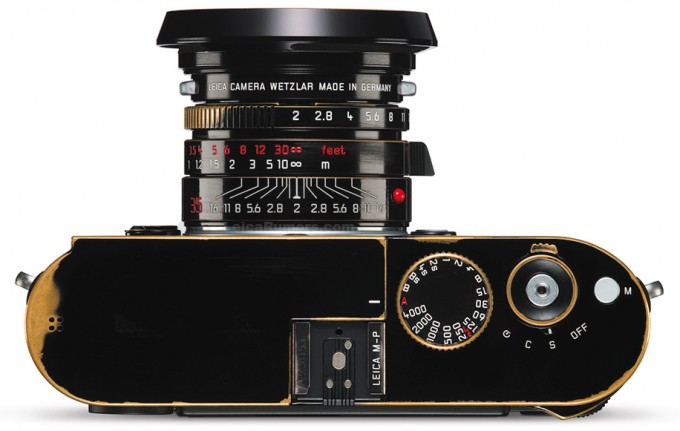
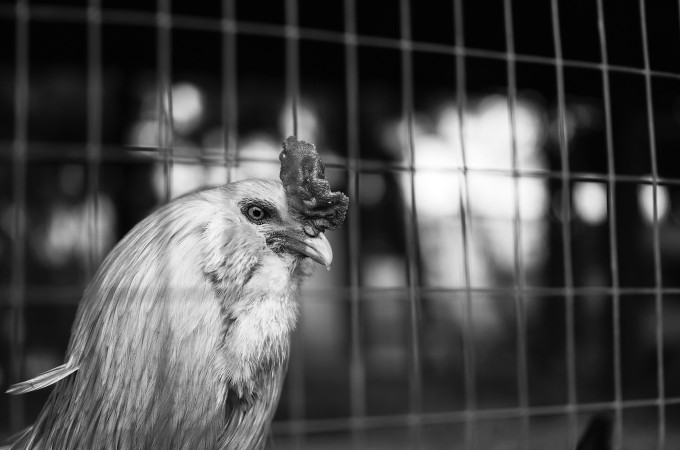
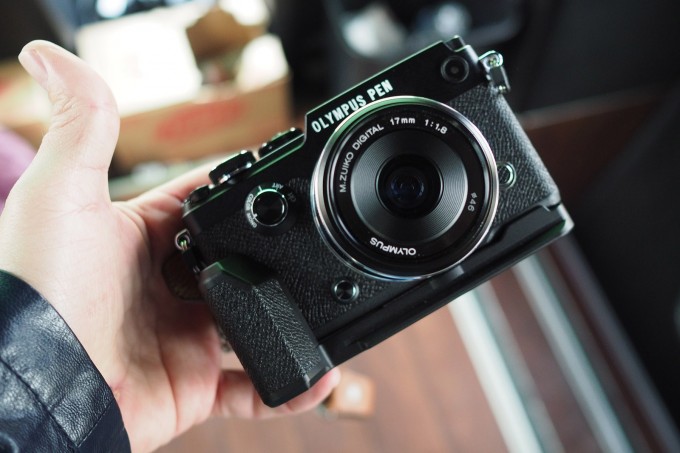

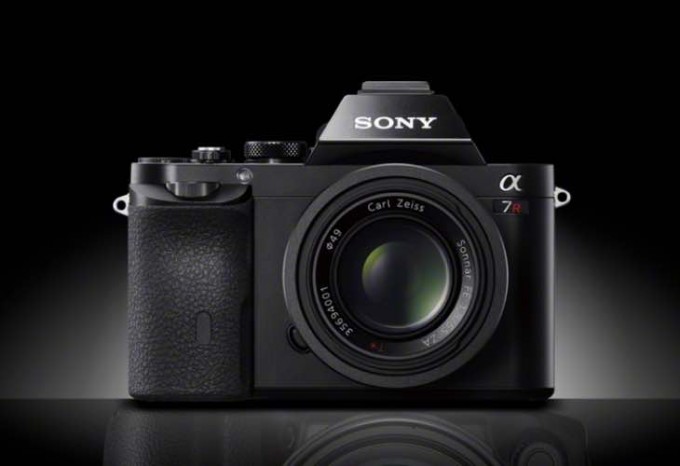

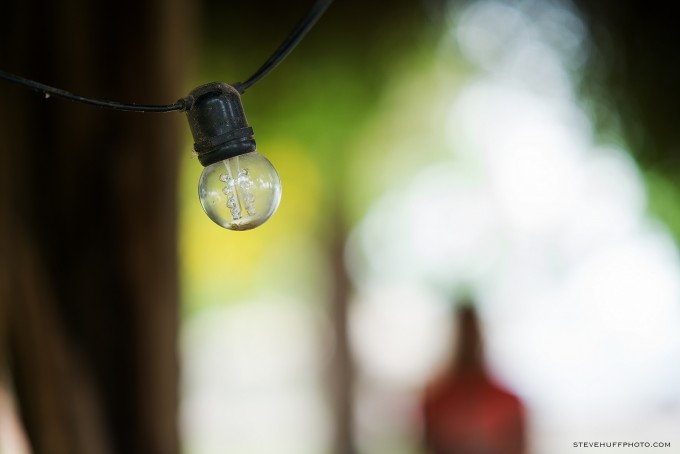
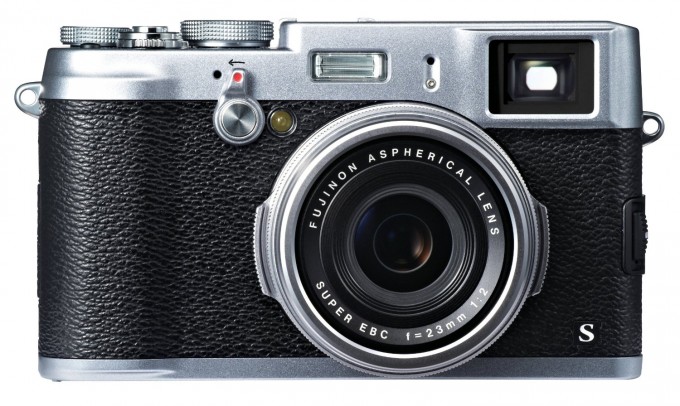
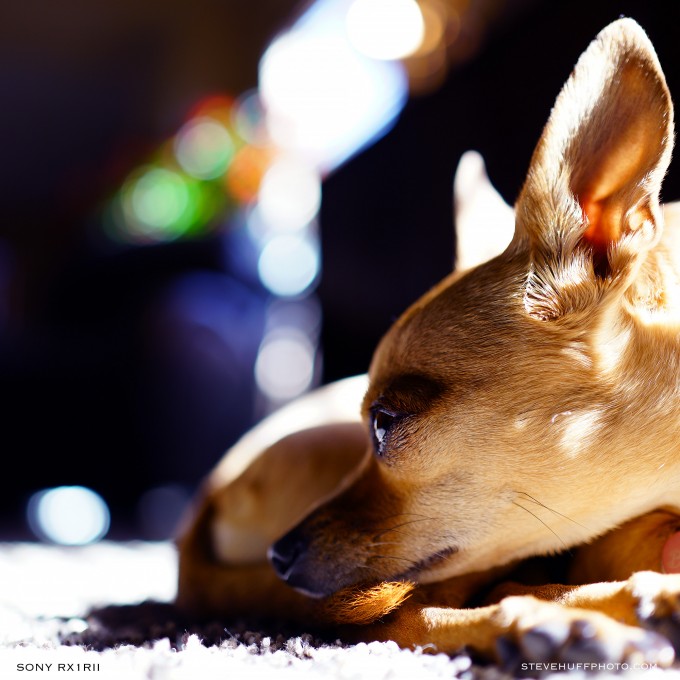
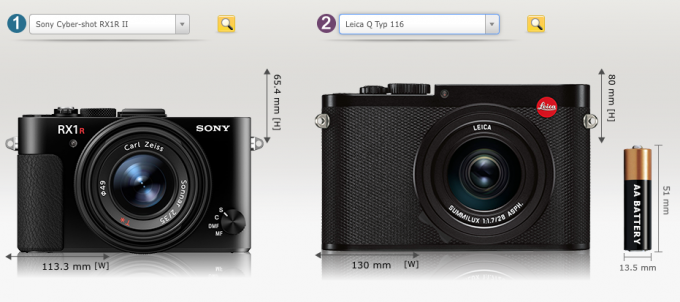
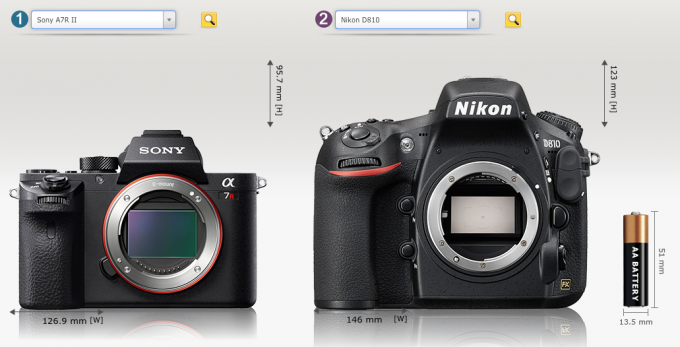
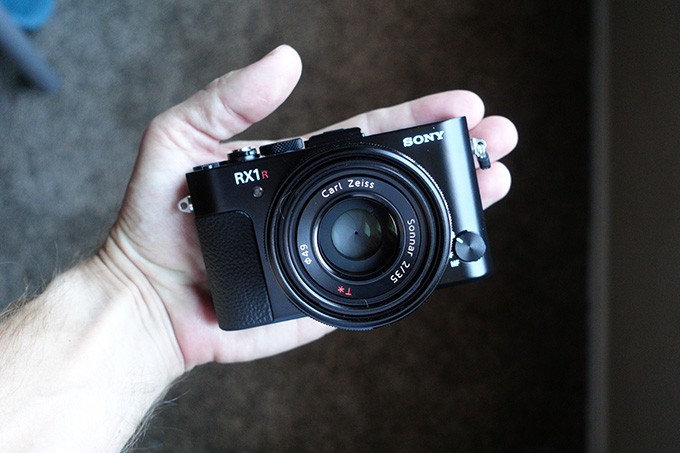




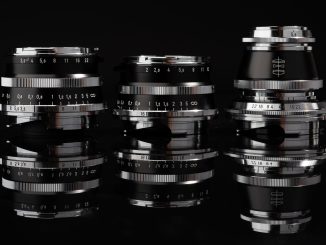
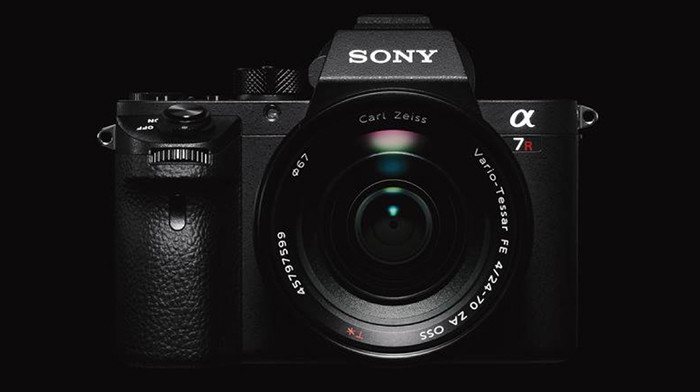
Great balanced article! No pressure made on readers, no ultimate recommendations which camera is the right and the only choice (except that it must be mirror-less 🙂 ).
Still initiated love and hate arguments…apparently some people need one winner 🙂
But only some of them-rest went tom make photos or at least learn how to get best photos from cameras they own and use.
Regards!
In the mirrorless vs DSLR discussion it is sometimes forgotten that not every DSLR is a big-fat zoom-equipped Canonikon. I am a (long-time) Pentax user, and a Pentax dslr body combined with one of its compact apsc-optimized prime lenses, is about the size and weight of Leica M, which is fine for me. Switching to mirrorless would save me just a few ounces to carry and a problematic (for a hiker/mountaineer) reduction of battery life.
You could also mention that not all DSLRs are as big as the D810. Both Nikon D750 and Df are smaller. Yet, bigger than the Sony.
Reason for reading this article now was that I needed to remind myself why I like mirrorless. I have both a Leica M and Fuji X-Pro2 mirrorless. Yesterday I did some hiking and shooting with my D750 and a 50mm. Had a great time, got some nice photos and no sore neck/shoulder. Today I wanted to repeat the trip with my X-Pro2 with the new 35mm mounted. Battery went flat after an hour! I had difficulties keeping the focus points in place (kept moving around when I grabbed/carried it). It is a sunny day and I couldn’t really tell that certain settings change. It’s a little too light so it keeps bouncing as I walk.
Anyway, I love the IQ, I love the feeling of the camera. I also love the handling and feeling of my D750. Minor annoyance with the D750: I keep losing the eyecup every time I bring it out. Major annoyance with the X-Pro2: Keep accidential pushing some buttons that can’t be locked and dead batteries. Will keep them both for now. Tomorrow I’ll take the Leica for a walk! 🙂
I did sell all my Canon DSLR s and bought Fujifilm X bodies and lenses. I do all my wedding work with them.
Hi Steve, I liked your post but for me mirrorless does not work and also all those pro arguments are not for me. I especially need a very good continuous AF, which mirrorless can’t give me. Long battery life, shallow dof and a good grip. I tried Sony A7, A7II, Olympus E-M1 and Fuki X-T1. My D700 makes me happier than anyone of them. There were some no gos for me, like battery life and AF. But there are alos festures I enjoyed. Also more modern FF-DSLRs are not really to my tast. It is very personal, but there are maybe a lot others they think the same.
And please, don’t call opinions facts. EVF is not better than OVF, it is just different.
You did not try the A7RII or especially the A7SII? The fastest of all of the full frame mirrorless? I can get more accurate AF with the A7RSII than the D800 or D700, and is WYSIWYG with the EVF. But the A7SII slaughters the D700 in every single way from IQ, to high ISO to size to AF, etc with the option to use many more lenses and create stunning video, even at night in the dark 😉 No contest. You should rent one and see.
A very interesting post, Steve, and illuminating discussion from various angles. I’d still like to know where you think SLT with its non-moving mirror and APS-C sensor comes into the equation – not least in relation to MFT.
If you are a pro ( fashion, magazines, nature, sport ) DSLR are the go to tool. Best in any ways durability, battery life, focusing, native pro lenses etc
If you are not pro, any modern camera will do just fine
Sport? Yes, for the most part, DSLRs are still superior. But not for other things – not any more.
Attention guy! Rumors says that Canon is into a full frame mirrorless camera. Things will be interested!
I believe that once Nikon and Canon join the club within the next couple of years we shall see a completely different situation, and a battle for buyers will start that will shall the whole business. But they will still continue dominating the professional market. Leica may survive because of the sheer number of people with a lot of money to spend who like to show off the red dot. But how will Olympus fare and Panasonic? well, if they manage to come out later this year with amazing new developments in sensor-design, they might be able to convince more customers fed up with carrying tons weight of glass, but will it be enough tosurvive?
Agree on most of the article’s points, except the following >>
“…the M9 made an amazing small, but very well made (better made than any DSLR)…”
There’s no way the M9 was better built than the Nikon D3. The former may have been made out of brass, but the latter was built to pro standards and could take an absolutely ungodly amount of punishment and abuse and still keep going. Probably the strongest, toughest DSLR EVER made. The D4 and D5 are not as well made, IMO.
—
“For me they beat the Canon and Nikon equivalents in IQ and build…”
Which cameras are equivalent to the A7 series? D810 and D750 in the Nikon range, I guess. The A7 cameras may well match up in IQ, but they certainly don’t beat the latter in overall build quality or reliability … and definitely not in professional or system support.
From what I’ve seen – and this is not apples-to-apples, I admit – the Leica Q delivers sharper images than the Nikon D800E (and even the Sony RX1r II).
If that’s the case, why don’t you see any/many at sporting events, weddings, news people, etc…..the Leica is an enthusiasts camera….that’s not bad it just not a working photog’s tool.
Not necessarily a surprise, given that the D800E has so much resolution that unless you use the best glass and your shot discipline is perfect, you’re actually likely to get worse IQ.
Put any Otus on a D800E and mount it to a tripod, though, and the Nikon would annihilate the Q.
Sorry guys, Leica RF cameras are NOT mirrorless! The rangefinder focusing system would never work without its mirrors. It has more mirrors than a SLR.
Its a mirrorless camera. There is NO mirror over the sensor that flaps up and down. Even Leica calls it a mirrorless camera and have ever since the M9 was launched. So it is indeed a mirrorless camera.
Actually, Per is right – technically speaking the rangefinder mechanism does indeed use mirrors. But I will concede that that’s not commonly known, the M series doesn’t use a flip up mirror in front of the lens, and it’s becoming popular to lump the M into the mirrorless vernacular.
Most upper end rangefinder cameras, including Leica M’s, use prisms and sliding glass wedges in the rangefinder mechanism- not mirrors.
Why doesn’t Leica take the mechanical rangefinder off their M cameras and substitute two cellphone cameras to do the rangefinder experience electronically in the EVF? Likely less expensive and won’t go out of alignment.
If a mirrorless camera was good enough for Weegee its good enough for me! Steve I assume leaving out the 4×5 Speed Graphic was an oversight? only joking
Really useful survey. Thanks. Would be interested to know, Steve, where Sony’s SLT cameras fit into the picture nowadays – if they do. I’m very happy with the versatility and portability of a trio of NEXes with each its “fixed” lens – Sony 50 f1.8, Zeiss Touit 12 f2.8, and Zeiss 16-70 constant f4. I usually decide which one to take before I go out and then just enjoy what i can do with it. But I have to say that for enjoyment of handling the Leica X-Vario with all its (by comparison) limitations is my favourite “compact” mirrorless.
First, enjoy the site; the enthusiasm it felt and I love stopping by daily.
For me, I took a rather unconventional path starting with M43 (Olympus) and moving onto DSLR. The low light performance above ISO 1600 on M43 became a nuisance, and although Olympus’s image stabilization was amazing I wanted better low light at shutter speeds faster than 1/60 of a second. Last, and I know this is completely subjective, M43 images appeared flatter (dynamic range, bokeh) versus larger sensors.
When looking at full frame, I just wasn’t sold on Sony (yet) and went with Nikon for the following reasons:
1) Sony bodies were smaller, but the glass was still large and the equation just felt unbalanced. I wanted the 24-70 and 70-200, and there really wasn’t any reason to choose Sony for a marginal total size difference.
2) Sony doesn’t have a Holy Trinity – important to me, but I probably meaningless to a prime guy.
3) Sony glass seemed more expensive and limited when compared to equivalent Nikon offerings.
4) Nikon & Cannon have better after market, used, and third party gear due to the maturity of the system.
5) DSLRs like the Nikon D750 have amazing focusing systems, especially useful when shooting continuous for sports.
6) Sony makes the best sensors, which I get on Nikon’s D750 and D610.
If I were to incorporate mirrorless into my bag, at this stage I’d probably go with Fuji. APS-C strikes the right balance, and I after using the X-Pro 2 Fuji finally figured out how to make and decent handling camera that can actually focus. Also, Fuji glass is amazing, and their JPEG rendering appeals to me.
Pretty much agree with everything you said.
Olympus makes a great system, but you’re right, the images look a little “thin” compared to their larger sensor counterparts, especially if the light is low or very contrasty. From my experience they work best at base ISO, in reasonable light, and when your subject is at least 50% the height of the frame. Under those conditions, Olympus glass certainly is exceptional, and one can get excellent results.
m4/3 just has a more restricted shooting envelope. If one is working within those restraints, it’s a great system with lots of other benefits.
Precisely. You know, I love what Sony is doing and keep my fingers crossed for them but….
– They are just too expensive. Yes, A7RII or A7S are packed with great technology but….actually in real-life situations, I´m just not convinced I´m anyhow limited with say Nikon D750 for almost half the price.
– Too expensive lenses (compared to DSLR choices). Batis 85/1.8, the new 70-200 GM, SonyZeiss 35mm/1.4…. Instead, Nikon’s 85/1.8 is as great as Batis, Sigma 35/1.4 ART too – for a fraction of the cost.
– too much of lens sample variations, sometimes rather cheap construction for the prices. Check lensrentals.com and their teardowns… compare it to say Canon 35mm/1.4 II.
– Continuous AF, esp. in low light. A7 series haven’t convinced me (yet).
– limited range of lenses. Sorry, I look down on any adapters…
For me, it is all about pictures in the end. During the past 25years of my photography experience, I have come to conclusion that it is the decisive moments that matters to me most in people’s photos. And to catch them properly, here is what I consider the most important:
– excellent AF module – excellent continuous AF, AF tracking (…and it is really not about catching a black dog running in a tunnel)
– as good as possible low-light AF
– full frame
– good iso 6400, usable 12800
– good dynamic range
– 12-16 mpx is sufficient for everything (regarding people’s pictures)
– quality fast AF lenses. No MF.
– optical viewfinder. For me, no EVF is there yet, esp. in low-light.
Despite all the indisputable technological progress, the price/value ratio is rather low for Sony IMHO.
p.s. for me, people’s photography is not shooting the “sitting, standing & staring”
Notes:
1) No, I have not been testing A7 bodies against DSLRs for days like Steve.. My conclusions are based just on a rather limited store experience…. So of course I may miss something.
2) I´m not eating the usual heavy marketing stuff but try to trust my own senses above all
3) Of course, I do take the price/value thing a lot into consideration. Your view may be different here.
Steve, you really nailed it on the head with PROGRESSION. There seems to be many articles about mirror less advantage or disadvantage everywhere, but no one talks about how aggressive the mirrorless segment has been. Its so exciting seeing what Sony, Panasonic, Olympus, Fuji, and even Leica come up with next.
Hi Steve, I’m not sure if I can post to another site (not affiliated in any way) but it might be interesting to have a counter article for people to read. I hope this is okay. It’s just to have two sides of the coin. Really though, the article is specifically about Sony and FF mirrorless:
http://petapixel.com/2016/04/04/sonys-full-frame-pro-mirrorless-fatal-mistake/
I have to agree with the FF Mirrorless weight/size advantage not really being a factor once you start comparing them to SLR’s and like for like lenses. Plus having a small body is actually a disadvantage in my personal opinion. It makes more sense for mirrorless to remain in the smaller sensor game if they are going to claim size as an advantage. I think Olly and Panasonic are smart to stay m43.
Some of the counter claims in the article may not be so strong because the rival DSLR with all the same features as a FF mirrorless doesn’t exist in one camera as of yet, but theoretically it’s possible. Sony’s SLT, Pentax’s In Body Stabalisation, and Canon’s 6D size are all promises that a future SLR/SLT would have all the features of a FF Mirrorless in addition to also having an optical viewfinder if required. Canon itself has already patented some sort of hybrid viewfinder which may indicate a future model that is half mirrorless, half SLR.
I have to say that my mirrorless cameras have all made me happier than my Canons I use for work.
Size/ weight, ease of use and the intangible joy of the EVF makes me take far more images than I ever do with the Canons.
My clients love the IQ and I love the fact that CDAF beats hell out of PDAF for accuracy thus taking full advantage of the lenses I paid good money for.
People can claim PDAF is better but the speed increment is minimal and the accuracy (as implemented inDSLRs) is lower.
Yes is true, about the fight between DSLR-s and mirrorles sistem. Is also true that DSLRs will be on the looser side but…and is a big “but” here, they will not die at all. They surely will have the same faith just like medium format, so DSLRs will became just a simple niche sistem, period. And, Steve i’m not a DSLR fan, i give up of them long time ago, but it is just one DSLR wich have an IBIS, and that one is Pentax K1, of course bulky, heavy but unfortunately he was “born” to late.
I recommend Olympus to anyone who is willing to listen:) I have two sisters- one took my advice and bought an EM10 II and the other bought a Canon T4i. Guess which one uses their camera? For all the hoopla about Olympus menu systems, once you get a grasp on the basics I think it’s also easier and more intuitive to use.
The only issue is the AF- which for kids and pets the Oly is a step backward. The C-AF Tracking isn’t all that bad and the EM1 has a slight advantage- but the rest of the line is lacking. That’s a negative you have to point out. Other than that, good to go!
For me, the Olympus system brought a paradigm shift in how I saw digital imaging. I do love DSLR”s but once you see what a modern M43 can do, it’s hard to justify penalties in size, weight and cost. Even though DSLR’s are coming down in price and there are tremendous deals to be had- I still wouldn’t go without my Olympus. It’s got…what do they call it..oh yeah, mojo.
I know a lot of people who own and use both. If I am ever asked by any beginner photographer what camera to buy I always suggest having a serious look at mirrorless. Mind you they seem to come back with a non FF DSLR or an Olympus mirrorless most of the time.
Battery life is still a killer, its so poor in comparison to a nikon D750 for example
Hi Steve, will you be reviewing nifty pana gx80? Looks like it is going to be the best of all micro four thirds at a very good price. The sensor will be lastly older but without AA.
I’m going to buy one I think with pana 15
I will 100% be taking a look at it. If I like it I will review it. I like the price and now has 5 Axis, which is awesome.
5 Axis On the Panny body 80 and not the same on the 8 if I am correct?
Do you think Oly 5 Axis IBS might be able to work with the Panny ILS in the future?
Would that imply new hardware or just a firmware update?
Thanks so much Steve. Good overall review of your choices and preferences.
I
have and still use a Nikon 810 for “serious” (forgive the term) work on a tripod and low light work, mostly at workshops. But, I also have an Olympus E-M1 with the three Pro zooms, the 25 f1.8 and the 60 macro that I use extensively. Yes, the low light situation is a limiting factor, but I have the 810.
I also shoot a lot on the street with a Leica Q. Recently, I wanted a companion rangefinder style camera for the street work. Considered long and hard and almost bought the Fuji X-E2s, but really didn’t want to get into another system. Friends/fellow shooters said “Sell all that Oly stuff and go Fuji…or SONY. No way. What I can do with the Oly trumps them, despite the 4/3 sensor.
I took a chance and picked up a Pen F. No regrets. I can walk around with the Q (28mm, of course) and the F with the 50 or even the 12-40 or 7-14 and have all that I need. Note that I wrote “…I need.” I’m sure others mileage will vary. We all have different needs (and wants!).
You know what I find interesting? Lots of people happily changed paradigms almost overnight when digital cameras became affordable. I was one of those people. 35mm went out, DSLRs went in. Never mind that early DSLRs were utter, utter crap. The point was that they were good enough cheap enough and gave instant results. And who doesn’t love novelty?
But now these same people who enthusiastically embraced a new paradigm don’t seem to like it that the digital camera is becoming true to itself with these mirrorless systems. I mean, if someone wants a digital camera, then why not go the whole way? Why use a 35mm SLR with a sensor where the film used to be?
Leica almost disappeared because it thought that digital cameras would never be as good as film (they were right, but they should have seen rapid improvements coming).
Today, we see a similar attitude among some people: mirrorless cameras are just ‘toys’ or ‘fads’ or ‘amateur’ cameras. Not that people’s opinions are invalid. But I find it odd that every now and then, people will gather online in spaces to discuss their enthusiasm for mirrorless systems in general, and the odd critic will come and join in and try and lecture everyone else about how mirrorless systems are just a flash in the pan or whatever.
I don’t go to DSLR forums and berate people for using what I consider as stupid technology. I do recommend mirrorless systems to people who ask what camera they should look at buying, but that’s it. I stick to the point and offer the best advice I can with enthusiasm but without zeal.
Today, I look back at a lot of DSLRs and laugh, but only a little, because they were as small as you were going to get if you wanted a digital sensor. And as you say, DSLRs are actually better at some tasks. But, they’re now niche products and I cannot recommend a DSLR to anyone anymore.
I think you are forgetting that many mirrorless users and “fans”, like myself, are merely saying what we wish the mirrorless system would be like. Who would think of them as toy cameras?
For me 2-3 things are very important. Battery life, better EVF so that I can track BIF on a sunny day and balance between lenses and camera body. Even a normal zoom lenses feel huge on the Fuji X-T1 (16-55 f/2.8).
I honestly wish I could find a mirrorless camera that I was as happy with as my DSLR. Size and mirrorslapp is the only downside. I don’t carry a DSLR every day, but I often wonder why some people hate them. It’s like hating a SUV – any smaller car can get you comfortable from A to B…
Steve, you are right on the money on this one. As a travel freelance photographer who shot mostly Nikon and Leica, since about 6 months ago I’ve been shooting Olympus cameras for all the reasons you mention here. That doesn’t mean that I don’t recognize the fact that full-frame Nikon sensors are very good indeed, but rather that the quality difference doesn’t seem to justify all the negatives right now with those big rig systems. When flying to multiple countries, hopping on trains for internal transportation, and exploring old capitals, portability is key. And who cares if a camera is labeled as “professional” or not these days. What matters is whether you can market those photographs like those fellows in Instagram, who are killing it with iPhones and point-and-shoot cameras. In fact, most of those old-timers out there are just trying to differentiate themselves by giving us gear lists that most of us cannot afford, but which are no longer imperative to creating meaningful visual content. Like the big camera rigs they still carry around, they too will be a thing of the past in the very near future.
Leica mirrorless did not stop with the M.
The Leica SL is a mirrorless camera with the functionality of a Nikon DSLR.
And it takes all my Leica M lenses.
Much smoother in operation than the M240.
And produces better images with the same M lenses.
This is the king of mirrorless cameras.
Goff
I know, I reviewed it here with a huge review quite a while ago 😉
And with the 24-90mm Leica lens on it, it weighs as much as a neutron star. 😉
Seriously, it’s heavier than a D5 with the 24-70mm f/2.8.
Some call me a Sony fanboy as I own and enjoy their cameras. However Sony’s repair system is appalling in the UK as it is sub contracted, with the spares (as I was told) coming from japan on a case by case basis. You need to allow 4 to 6 weeks so if you are using these cameras professionally or semi professionally which means either having a backup system or two of key items like camera bodies. It is such a shame. I sometimes wonder what others vendors are like.
Great article, Steve — a major GAS producer but perfectly accurate and well balanced ! Loved it. Thanks ! In a mere six years or so, the latest mirrorless cameras from the likes of Olympus and Panasonic have begun to seriously challenge DSLRs, if not surpass them in many practical areas of usage. Today, I use Oly’s E-PL5 and Panny’s GX1, with a few of their great lenses, and have long forgotten my DSLRs. It is sobering to think where mirrorless technology will be another six years down the line … and where Nikon and Canon will be. Keeping Kodak company, maybe?
Subroto Mukerji, New Delhi, India
How about the leica SL another great camera too
Hi Steve what about leica SL, not mention in this article ?
Great article and I concur completely, I love my mirrorless cameras. I own a Nikon D800E, which is a terrific DSLR, but I don’t use it nearly as much as my Sony A7rII, my Leica Monochrom or my Fujifilm X100. All of which, BTW, were purchased primarily on the strength of your recommendation. And I have to single out the X100 for my special commendation. Alone among my various digital cameras, the more I use it the more impressed I am with it. Despite being five years old, it continues to deliver a picture quality that’s really special. It’s quirky in its operation, but now that I’m used to it I find it a joy to use.
I think I am on the right track. Since Nikon has lunched mirrorless camera 4 to 5 years ago. I have already 6 mirrorless lens. Yes there are all light weight and I carry them all everywhere I go. My photos were great and always interesting on facebook because It contain closeup of birds, animals, flowers, landscaping and family portraits. Before when I was using DSLR system I have to limit the type of lens to bring along for my trips.
Those are all good reasons, and here’s another: great EVFs. Not only do they make it easier to see subject details in poor light, but I find they let me judge exposures well enough to dispense with metering. I haven’t taken my Olympus or Fuji out of manual mode in two years! It makes photography a lot less complicated.
Hi to Steve and everyone…I’m agree at…90%! I was a proudly Canon owner, then I bought also a Sony A7 Mk II. Well, have to say that as I bought the A7 I used 5d lot less, due to the joy of use a mirrorless. BUT I think Canon 5d Mk III, especially with Zeiss glasses as 35mm Distagon or 100mm Makro Planar, beats Sony A7 Mk II in image quality, color, and high iso without any doubt. I think it’s better also than a Leica M 240. Sure it isn’t such a joy to use. Then…I moved to Leica SL system and…well we’are talking about heaven! Somebody can say its insane price makes nonsense but the more I use it the more I’m happy. Just it. Is that he definitive stuff? Maybe, or maybe not. Talking about dimensions with 24-90 Leica lens it’s not so smaller than a Canon 5d with a 24-70mm. The weight is about the same. Sure, I can put on M glasses and I’m near to a pocket camera, but there are some situations where I think a DSLR in still better.
I recently shot for work in sport events with a Nikon D4s, a Nikon 70-200mm and a SB900 flash. We’re talking about 4kilograms approx in your hand, it’s like a torture yes but for shooting sports, I think this kind of stuff is still better for professional use.
I agree with you 90% Luca, Leica SL is hard to beat in any term except maybe sport. While I didn’t agree is a matter of personal preference. I shot 5Dmk3 with 55 Otus, it’s amazing quality, but imo I still choose MP240+50APO result, it’s bolder, more contrasty and I prefer the Leica color over Canon+Otus, not to mention the size lol. The Canon 24-70 is not anywhere near the SL 24-90 zoom quality. I never shot zoom as good as prime lens and I think the SL 24-90 it’s the best zoom available now. I shot A7II too, I think it slightly better than 5Dmk3, but I didn’t like Sony noise management, Canon is cleaner above ISO 1600.
I don’t shoot sport, mainly HI, street, and travel. I agree the mirrorless still need to catch up in sport photography. While single AF point is the same level as DSLR but it still need a lot improvement in CAF
Weight also my main consideration. While in some aspect DSLR is still hard too beat, I will not look back, I sold all my DSLR system and move to Leica.
At the end I did the same Arai! I think I won’t go back, love my SL. I’m not rich, it was really hard for me to afford it but…yes poor but happy! For sure. Sport photography is not my main occupation, when I shot that I use agencies gear so I had the opportunity to try a lot of cameras and I think sports pictures is the only environment where (professional) DSLR (not 5D but only 1D or D4s) can beat a camera such a Leica SL. That’s it. Obviously is just my opinion! Sony A7 is really a nice camera but I didn’t appreciate it at all in some conditions, where 5D and Leica produce a lot more balanced file. I just miss the “flexible” rear display. So useful in street photography for example.
I shoot Canon 5Dmk3s professionally and I feel their IQ is just fine. However as to the criticism of color and contrast issues of other brands I think that is not really fair. I use camera profiles with all my cameras and find that I can tune color to my liking for any camera.
I also have a couple of Panasonics and Olys and have tuned their RAW files in LR to my liking so I have no fear from any brand so long as they are able to deliver RAW files.
What is not mentioned in Steve’s article is the accuracy of mirrorless CDAF. I have micro adjusted the AF for all my bodies and lenses and I still have issues on occasion with accurate focus. My mirrorless cameras NEVER have that issue and yield a far higher percentage of sharp images than my Canons.
Ironically, I have a Panasonic FZ-1000 that can reliably deliver sharper images than any of my Canons in available light conditions. I attribute that to the ability to use higher shutter speed coupled with a larger aperture that still gives me better DOF than FF. CDAF also seem to be just better and is getting almost as fast as PDAF.
As for sports, many sports don’t need fast AF. And IME the current crop of mirrorless cameras give me high frame rates and high hit rates for AF. Most of the criticisms come from spec readers rather than users working in the field of high volume sports photography.
I’m agree when you talk about CDAF. Regarding my criticism about Sony, I did the same pictures in the same environment with a Canon 5D mk III with a Zeiss 35mm Distagon and a 100mm Makro Planar (both EF mount) and also with a A7 MkII with Zeiss 35mm Distagon and the aforementioned 100mm with a Metabones adapter and well. Lot less work to do in postproduction than Sony. Otherway, in other situations I preferred a lot more Sony over Canon. With Leica SL I’m always happy, but this is my personal experience. Just it. I think there’s no perfect camera, the only is the one you shot with joy at 90% of the time.
About fast AF for sports…well, if you shot jumping horses you may not need AF at all, but I have to see a man who doesn’t prefer a fast AF when shooting gymnastic or other sports! Where fast AF is needed DSLR still are better I think.
Don’t forget the Fuji Xpro2. I know your not really a fan of Fuji but I just sold all of my pro glass(12-40 f2.8,50-150 f2.8,45mm f1.8, and 17mm f1.8 from Olympus and have moved on to Fuji. I bought into Olympus due to people like yourself and the great reviews. I almost moved over to Sony however the lens are still to big ( except the 35 f2.8 and the 55 f1.8 which are great glass) but the look, feel and performance of the XPro2 has kicked the ass out of my OMD EM1. I know you say micro 4/3rds can beat most APS sensors and I thought so at first but the image quality from my XPro2 again kicks any micro 4/3rds period.
I guess you do not mind that you will not be able to use your Fuji lenses with any other camera. Product depreciation and loss of value is a fact and seems that you will be hostage of Fuji. While many mirror less cameras offer more options than Fuji and their lenses can be used in other cameras.
Mirrorless lenses are all locked to the specific system for which they are designed. You can use adaptors to accept legacy lenses from DSLR, SLR, or rangefinder systems, but cannot use a lens from one mirrorless system on another mirrorless system.
Fuji is no different to other mirrorless brands in this respect.
More importantly, you do not buy a lens for its investment potential. You buy it to use it.
I hate to say this Nobby, but DSLR’s are even worse … but at least you can fit (and use manually) virtually all DSLR lenses on a mirrorless body, as you can many Rangefinder lenses. From personal experience, you can also fit with full compatibility, 4/3rds lenses on an m4/3rds body.
I thought that’s what I said, my bad if I wasn’t clear:
Any mirrorless system can use its own lenses and – with the appropriate adaptor – legacy rangefinder, SLR, or DSLR system lenses. You can’t use lenses from one mirrorless system on another mirrorless system (except when using legacy 4:3 to µ4:3 – I forgot that).
There is no real compatibility among the legacy SLR and DSLR systems, although there is a Novoflex adaptor that lets you use some Nikon F-Mount lenses on Leica rangefinders
Of course you exchange lenses among various Mirrorless cameras this is part of the initiative and the beauty. It does require adapters. For example you can take a Leica lens and use it almost in any other camera, everywhere. You can take an Olympus lens and use it in Panasonic or possibly some early Leica or any m4/3 camera without adapter.
Fuji lenses cannot be used in any other camera.
No, they cannot, but what’s your point, exactly? You can’t use Olympus lenses on a Leica SL or Sony body, either (FF OR crop). And as far as adaptors are concerned, you can mount pretty much any DSLR lens, or Leica M series lens on the Fuji X-Mount, no problem.
Don’t get me wrong: I love the Olympus OM System, but the fact remains that the “weakness” of the system is the smaller sensor, when compared against other larger sensors produced today. The X-Pro2 utterly annihilates the E-M1 for image quality, especially as you start pushing the envelope of light, DR, etc. But it shouldn’t be a surprise, really – it’s a bigger, newer sensor with another 50% more pixel density … of course it’s going to be better.
Not that the E-M1 is, or was ever, bad, per se … it’s still capable of producing very good image quality. It just doesn’t reach excellent image quality when compared to today’s larger, state-of-the-art sensors. Whether that difference is going to be necessary or even noticeable for your output application, is somewhat subjective.
btw: Mirrorless is going to heat up dramatically over the next 12 months, I think. DSLRs used to outsell mirrorless by 3 to 1. That’s slipped to 2 to 1 during the first couple of months of this year. If that trend continues, it’s likely that Canon and Nikon will have little choice but to move in and attempt to take over the mirrorless market.
depreciation is only a problem when you sell your gear, but buying an xe2s equivalent camera for less than 300$ (for you hold outs the 4.0 firmware for the xe2 is amazing) is a microscopic problem in the real world and not that different from the leica dynamic of getting the same camera when buying a 200$ bessa or CL or a 600$ M6 over a 20k M7 or a 4.4k MP. The only ones stressing about not having a D5 price tag equivalent camera around their neck are the ones who could care less about what the images look like.
I own both. But I shoot 99% of the time with the DSLR. My E-M1 and 12-40 2.8 should probably be sold while it’s still worth something. Why? I don’t enjoy shooting with the Oly. It’s finicky to use, marginal-to- terrible in low light if anything is moving, and eats batteries like crazy. The flash system is not great, same for action AF, IMHO. Smaller? Yes. Lighter? Yes. Features/stabilization/EVF? YES. But I’ll stick with my Nikon D750 gear for the time being for any serious work, much as I hate the weight.
Oh, and for the record, Steve, your enthusiasm for m43 got me to get the Oly. I really wanted to make it work for me, but…. Not yet. But I’ll keep reading, tho, ’cause I really enjoy your blog! There’s going to be a crossover point for me in the next few years, I bet.
Problem is you have the 12-40 2.8! Try a Nocticron or a 75 1.8 or a 12 f/2 or a 25 1.4… 🙂 The E-M1’s one weakness is low light, always has been and this was reported by all reviewers, but nothing beats the Sony A7SII for low light 😉 Not even a big Nikon. Thanks!
I’m a professional photographer who uses Canon DSLR. Olly lent me a E-M1 with 45mm 1.8, 75mm 2.0, and the 40-150 2.8 pro for a month. I tried it out on several professional shoots. The image quality is there and it’s an impressive little camera, although I found the shooting experience not as good as the SLR. I wouldn’t trade the SLR in for professional work just yet and so far the majority of working professionals agree (Although some have made a switch). It would be excellent for theatre work where complete silence is ideal.
Sheesh! My car is better than yours. When will this superfluous discussion ever end? One moron posts why he likes DSLRs better than mirrorless and everybody feels the need to contribute.
We’d be better off spending this time shooting photod that move people, that’s tell a story.
It is silly to fall for the seed the camera industry has planted: one camera is supposed to do it all. There are many different cameras for many different tasks.
“There are many different cameras for many different tasks.”
My message for so many years and in this article. Its not about ONE camera, its about choice, and we have it. Here I state why I PREFER Mirrorless over DSLR’s. Nothing more or less.
Can’t do anything more than fully agree with your article Steve. I can’t help thinking though that companies that focus mainly on photography like Canon and Nikon will soon have a decent answer to mirrorless and join the club. Both Canon’s and Nikon’s current mirrorles interchangeable lens offering are less than stellar so they might need to change course. But there is also the enthusiast’s compact camera with fixed lens market in which, IMO, Nikon with the DL range has a great trio. But so does Sony.
I can’t comment on Leica since for a nice Kit like I have now from Olympus/Panasonic it would cost me tenfold so I never tried them. I do find rangefinders fascinating though but only tried one for one day.
Amen.
Except the Leica thing. Tried ’em many times. Never liked the viewfinders. Never.
But otherwise “Amen” brah.
Jim, that’s because you never tried the Lenny Kravitz edition Leica M.
😉
Huss
The one thing I learn from Leica, It’s always about love or hate, either you hate the system or you really love it. I wish I hate Leica, it ate all my money but it also reward me with the pride and pleasure I never had with other system period.
I owned an M-4 and did love it. Sadly lenses were always a month’s pay. Whenever I got a raise, Leica apparently found out and pushed up the prices of its lenses. Also as an aspiring pro, I needed backup and thus sold my M for two Nikkormats.